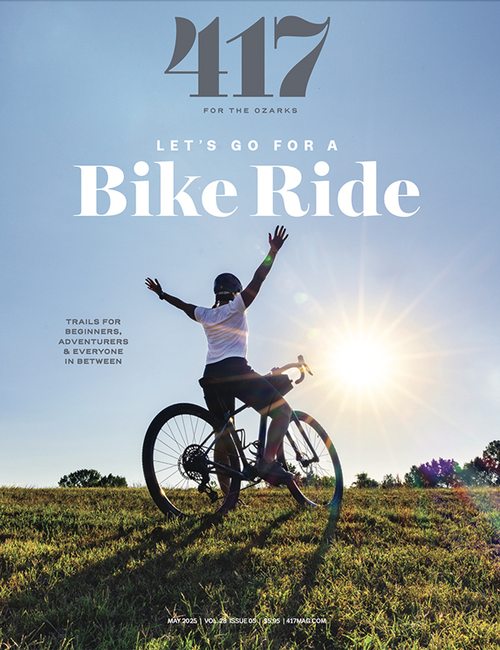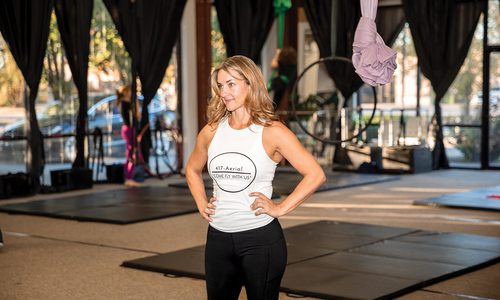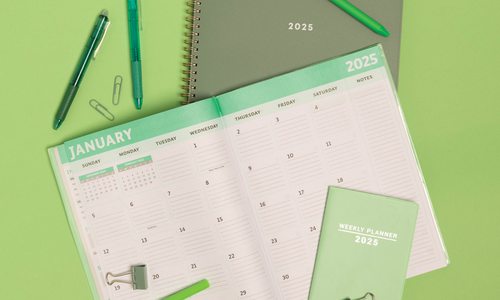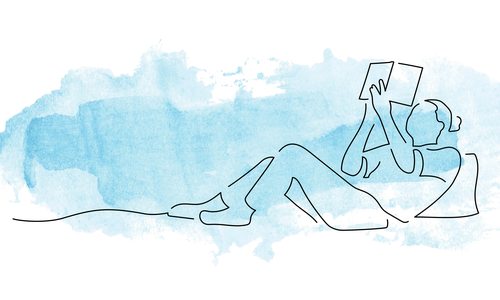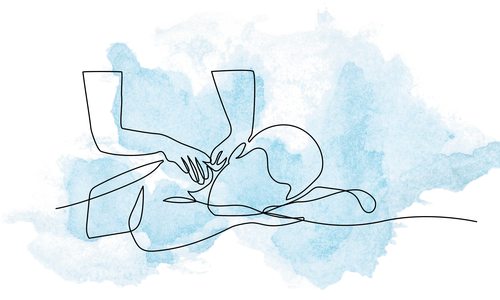
Lifestyle
SWS Golf Academy
We send our senior editor to SWS Golf Academy, which specializes in helping golfers train their bodies to truly perfect their game.
Written by Savannah Waszczuk | Photos by Brandon Alms
Jun 2016

Deer Lake Golf Course, 5544 MO-266, Springfield
When I was a kid, my dad gave me the same piece of very important advice time and time again: You’ve got to have the right tools for the job. It didn’t matter if he was showing me how to cut the lawn or slice up a steak, he always stressed that having that perfect piece of equipment—that ultra-sharp mower blade or that quality kitchen knife—was key. And although this has absolutely nothing to do with the game of golf, I kept thinking of my dad’s advice when I recently met with Sean Saunders, certified personal trainer for Fitness 4U and golf performance coach with SWS Golf Academy (417-597-2411, swsgolfacademy.com).
I met with Saunders for his golf gig, and he put me through the TPI (Titleist Performance Institute) Assessment screening he does with all of his clients who are working to improve their performance on the golf course. “TPI is the No. 1 resource for serious golfers who really want to improve not just their golf game, but their bodies,” Saunders says. “Their mission is to educate golfers on the body and swing connection, and that involves screening the body at each joint. That allows us to find out their weaknesses in their bodies, which then relate to their weaknesses in the game.” Basically, the assessment is examining the body from the inside out, checking mobility and flexibility with every joint. If something is wrong, Saunders then tells you what it is and, much more importantly, how to improve it. He shares how you can make your body the best for playing the game of golf—making sure it’s the right tool for the job.
The Instructor
Saunders played collegiate golf at Morningside College in Sioux City, Iowa, and he became a PGA (Professional Golfers’ Association of America) pro in 2009. But after being in the golf business a while, he decided that being a club pro wasn’t a good fit for him. Instead he pursued a career as a golf instructor, and this led him to learning more about the fitness side of golf. “I’ve always had a passion for fitness,” Saunders says. And that’s why his current two roles are perfect for him. “I coach 10 to 15 clients for golf, and 10 to 15 for fitness,” he says. “It works out really well.” And though his golf clients are ultimately working to improve their game, the way they get there is through fitness training, so it all works out.
The Experience
Unless you can count a few rounds of mini golf as a kid, I’ve never played golf before. Honestly, I don’t even really know much about the game. If you handed me a club and asked me to drive the ball, I think I’d probably look a lot more like Adam Sandler in one of the beginning scenes from Happy Gilmore rather than a Tiger Woods or a Jordan Spieth. That’s why I was pretty terrified meeting up with Saunders at Deer Lake Golf Course. But he quickly took me back to his training area and told me we wouldn’t even be stepping on the greens, which helped ease the nerves a bit.
Instead of taking me on the course, all Saunders wanted to do was run me through the TPI Assessment Screening I mentioned earlier. This is one of the first few things Saunders does with clients, so it made sense for me to give it a shot. To check the mobility and flexibility of the joints, the TPI screening consists of 16 screens. “It allows us to find out where you’re compensating your body because of tight muscles and joints,” Saunders says. “These screens basically give us a blueprint of what is going on in your body with these muscles and joints.”
We started with the pelvic tilt test, which helps measure posture and motion and how well you can move your hips. These things all relate to the way you can swing a golf club. I failed, and I soon found myself on the ground learning how to improve my movement and motion for this area.
We continued with all the additional screens, which include everything from overhead deep squat, lower quarter rotation and toe touches to wrist and forearm rotations and even balancing tests. While I passed a few, I failed most of them. (I think I passed 6 of a whopping 16!) We learned that I have a weaker core and glutes, and I am not the most sophisticated when it comes to balance. But Saunders told me that my fails weren’t a big deal, and that many golfers he works with also fail a majority of the tests.
That’s kind of the point—after every fail, Saunders shows you the exercises to do to improve the mobility or flexibility, and then once you leave, he puts a routine together for you that focuses on all of your problem areas. “It’s a quick routine you can do daily,” he says. “That’s what I love about this. There’s no guesswork. You know exactly what you need.”
The shoulder figure four stretch helps improve the range of motion for external rotation. Limited rotation can cause golfers to swing over the top on their downswings.
The Effects
One of my favorite things about the screening was the way Saunders explained each and every test to me. And he not only told me what we were testing, but also how it relates to the game of golf (which would obviously be very beneficial to golfers) and how it relates to my life in general. For example—one screen showed that I have a bit of a mobility problem with my neck, likely because I stare at a computer the majority of most days. If I were a golfer, this would probably affect my swing. “If you have a tight neck when you’re swinging a golf club, you’re probably going to lift up a bit and take your eye off the ball,” Saunders says. But even as a non-golfer, this affects a lot of things I do daily, from working out to turning my head to look behind me while I’m backing up my car. But Saunders showed me exercises to help it, and my goal is to be a great little student and do them daily, so hopefully I won’t have these issues anymore.
While Saunders was a fabulous instructor for me and my non-golf educated brain, one of his regular clients, Mike Kolling, also joined us in the screening process. Kolling has been playing golf for close to 50 years, and he has been working with Saunders for a year and a half. He helped show me proper form, and he also reassured me in my lack of success. “I couldn’t pass a lot of them when I first started,” he said. But he’s improved immensely since his first screening, and he says the work has made a huge difference in his game. “I’m playing the best golf of my life now, and I’m 66,” says Kolling, who has won the White Tees division in the Deer Lake Golf Course Championship the past two years. The drastic improvement is fairly common for many of Saunders’s clients. “I really specialize in working with the 40-and-older crowd,” Saunders says. “That’s when you really start seeing the effects of tightness and lack of mobility and flexibility on their muscles and joints.” And while he has improved their games, he’s helped them off the greens as well. “We’re helping people with more than just golf,” Saunders says. “We’re bettering their quality of life, because they just feel better.” They’re making sure their bodies are the very best tools for the game of golf, and as a result, they’re feeling a whole lot better in the big game of life.

